Since 1981, October has been dedicated to acknowledging the pervasive reality of domestic violence. The goal is to unify voices, dismantle shame, educate about warning signs, and uplift survivors. Domestic Violence Awareness Month is recognized across the country, serving as a unifying event to raise public awareness and bring awareness to the issue of domestic violence. Domestic violence has increased during the COVID-19 pandemic, referred to as the 'Shadow Pandemic.' Domestic Violence Awareness Month was first declared in 1989, marking a significant step in the fight against domestic violence.

Introduction to Domestic Violence Awareness Month
Every October, Domestic Violence Awareness Month serves as more than just a reminder—it's a movement, a call to action that reaches into the heart of our communities. This isn't just about raising awareness; it's about creating real, transformative change. This dedicated month illuminates the harsh realities of domestic abuse—physical violence, emotional abuse, and financial abuse—experiences that touch lives across every background, regardless of sexual orientation, age, or economic status. On average, 20 people are physically abused by intimate partners every minute in the United States. This is your issue, our issue, and it's time we all step up to confront it together.
Throughout Domestic Violence Awareness Month, something beautiful happens—advocates, organizations, and community members like you come together in a powerful show of solidarity. We're not just supporting survivors; we're building a movement that refuses to let domestic violence victims face their struggles in silence. The National Domestic Violence Hotline (1-800-799-SAFE)stands as more than a resource—it's a lifeline, offering confidential support and connecting those experiencing abuse with the tools they need to reclaim their lives. Help is available for domestic violence victims through advocates who provide assistance by phone, chat, or text 24 hours a day. This is how we create change—not through distant awareness, but through genuine connection, real action, and unwavering commitment to ending domestic violence. Together, we're not just building safer communities; we're creating a world where everyone can thrive.
What abuse looks like (and often doesn’t)
Abuse is not just physical. It can be emotional, financial, digital, or coercive. Abusive behavior can manifest in many ways, including manipulation, intimidation, and other tactics that cause harm without leaving visible marks. Domestic violence is a pattern of abusive behavior used to gain or maintain power over a partner.
Some warning signs to watch for (in others or yourself):
Isolation: being cut off from friends or family
Excessive control: needing permission for small decisions
Financial sabotage or interference
Gaslighting: making you doubt what you know
Sudden personality shifts, fear of walking on eggshells
Minimizing, blaming, threats
Physical abuse: unexplained injuries, bruises, or signs of physical harm
Abusers use a range of tactics to maintain power and control in a relationship, including emotional, psychological, and physical abuse.
As one Michigan center’s director observes: “the biggest misunderstanding about domestic violence is that it’s easy to leave … it’s all about power and control.” 9&10 News Trauma from being physically abused or harmed by an abuser can have long-lasting effects, impacting emotional well-being and recovery.
Creating a Safe Environment
Creating a safe environment for domestic violence survivors isn't just essential—it's transformational. This journey of healing and recovery goes far beyond physical safety. It's about truly holding space for survivors, listening to their stories without judgment, and validating every single experience they share with us. Holding space counters the fear that keeps survivors silent by providing compassionate support that builds trust. When community members, advocates, and organizations step up to support survivors, we're not just offering resources, safety planning, and emotional support—we're building a movement that says "you matter, your story matters, and you're not alone in this."
Raising awareness about intimate partner violence and other forms of domestic abuse is how we shatter the silence that has surrounded these issues for far too long. The national coalition against domestic violence and local organizations aren't just working—they're fighting tirelessly to ensure survivors' voices are heard and their concerns become our priority. Domestic violence affects not only the victim but also family members, friends, and the community at large. When we foster safe spaces in our homes, workplaces, and community centers, we're not just creating physical locations—we're empowering survivors to seek help, find real hope, and begin the profound work of healing.
Creating a supportive environment isn't just about responding to abuse—it's about becoming the change we want to see. It's about proactively educating ourselves and others, advocating for transformation, and maintaining power and control over the narrative so that survivors never have to face this alone. It often takes survivors seven attempts to leave their abuser for good due to various challenges such as housing and financial security. Together, when we hold space and offer unwavering support, we're not just helping end domestic violence—we're creating a future where everyone feels genuinely safe, valued, and empowered to thrive.
How to be in solidarity
It’s not enough to know what shifts are how we show up:
Believe survivors. Trust when someone says “help me”.
Offer safety, not advice. “What do you need?” is better than “You should do X.” Hold space for the person or victim by listening to their story and voice without judgment.
Educate yourself. Use toolkits, webinars, and books. Focus on learning how to advocate for women, partners, and anyone who may be abused.
Create a safe space in your sphere. At work, in community groups, in friendships, a safe space is essential for survivors to feel supported, heard, and free from judgment or harm.
Speak out (if safe). Use your platform to shine light. Use your voice to support victims and women. Use hashtags: #WithSurvivors, #DVAM2025. The Hotline+1 Listening attentively to survivors is one of the most powerful ways to support them.
What to do if you’re the one in danger
Reach out confidentially.
National Domestic Violence Hotline: 1-800-799-SAFE (7233).
Make a safety plan. Include escape routes, trusted contacts, and essential documents.
Document, when possible. Journals, photos, messages—but only what feels safe.
Find local shelters, legal advocacy centers, and support groups. Community resources are essential for providing support, safety, and assistance.
Therapy & healing-support spaces. Addressing trauma is a key part of the healing process; emotional, somatic, and spiritual support matters.
Next steps: embodying commitment
Host a virtual circle, listening space, or teach-in.
Post stories of survivors (if consented) or quotes of solidarity, amplifying the voice of survivors by sharing their story.
Partner with local organizations to volunteer or donate.
Closing reflection
You may not see every struggle beneath the surface, but you can practice soft attention. You can be a quiet presence. You can be woken. You can be open.
Healing is not your burden to carry, but your capacity to hold can become part of the tapestry of care.

